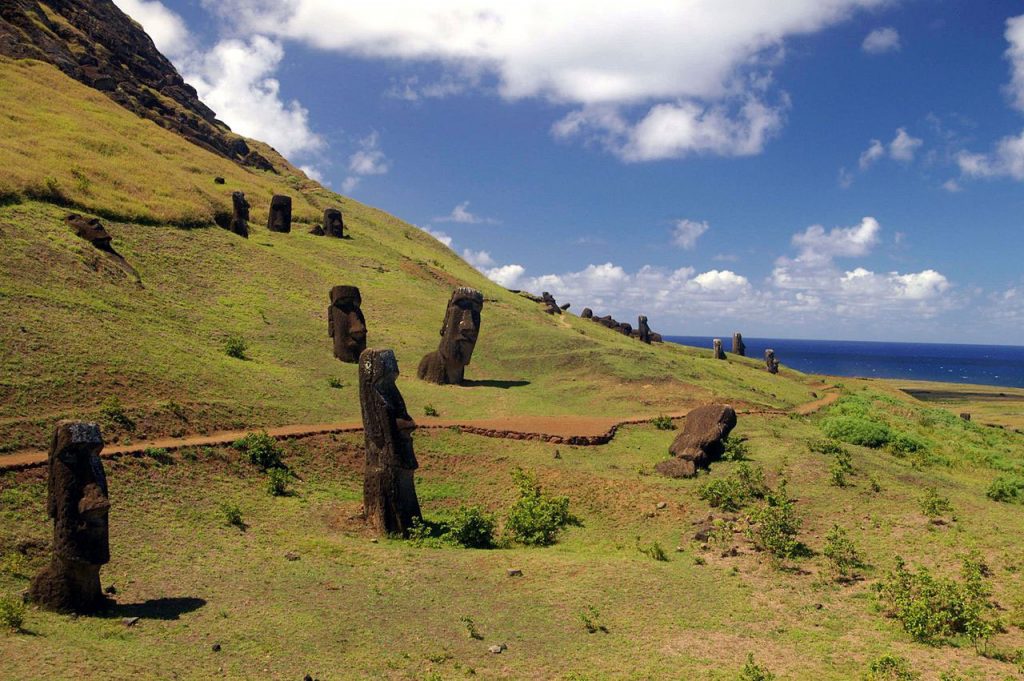
Often referred to as the “Easter Island heads,” the moai statues found on Chile’s Easter Island are the focus of one Binghamton University professor’s research.
Carl Lipo, professor of anthropology at BU, is conducting research that could shift the historical understanding of the Rapa Nui people, the inhabitants of Easter Island who built the moai statues. His work could also improve archaeological research methods.
The team’s research has put forth a new narrative about the Rapa Nui people, Lipo wrote in an email.
“Many of the aspects of what people assumed about the past was not rooted in evidence that could be linked to the archaeological record,” Lipo wrote. “Instead, people had made claims based on previous claims that went back several hundred years.”
According to Lipo, the European narrative holds that the Rapa Nui were responsible for their own decline because of extensive environmental damage to the island. But the Europeans brought disease, quickly enslaved the Rapa Nui people and raised thousands of sheep on the island.
“The ‘story’ of Rapa Nui reflected cultural norms of our contemporary times,” Lipo wrote in an email. “The ‘demise’ that we have seen on the island in the past 200 years has been the result of impacts by Europeans.”
To conduct its research, the team utilized structure from motion-mapping technology, a type of photography that models 3-D structures that otherwise can’t be seen correctly in photos. This allows for a 3-D representation of the engravings on the pukao, or the “topknot” hat-like structures found on top of the moai.
The petroglyphs, or rock carvings, found on the moai statues are detailed in the study’s structure from motion technology and changed the accepted narrative of the Rapa Nui people. The transport of these large stones to create the moai and pukao are a result of a hierarchical system with strict social roles. Instead, the researchers discovered that small groups of people were responsible for the individual statues.
Sean Hixon, a graduate student studying anthropology at Pennsylvania State University and a member of the research team, emphasized the importance of the emerging technology of structure from motion.
“Our work with the pukao illustrates the usefulness of structure from motion mapping in recording previously-undocumented aspects of the archaeological record,” Hixon wrote in an email.
The pukao petroglyphs showed they were built by the Rapa Nui to alleviate the issue of scarce resources and to bring Rapa Nui communities together in the process of creating these statues. According to the researchers, the inhabitants dedicated themselves to building these statues because it was believed to be key to their survival.
In terms of the influence of weather degradation on the moai statues, Dylan Davis, a first-year graduate student studying anthropology at BU and a member of the research team, noted the importance of this study taking place before the pukao are further damaged.
“By preserving such information now, future work can continue to discover new information about prehistoric Rapa Nui society long after the original features have eroded,” Davis wrote in an email.
Lipo echoed the importance of the proper analysis of the Rapa Nui people by stressing its relation to today’s world.
“The lessons we can learn from these examples are tremendous,” Lipo wrote. “We can see that we need to figure out ways of fostering sociality—creating mechanisms that bring people together.”


